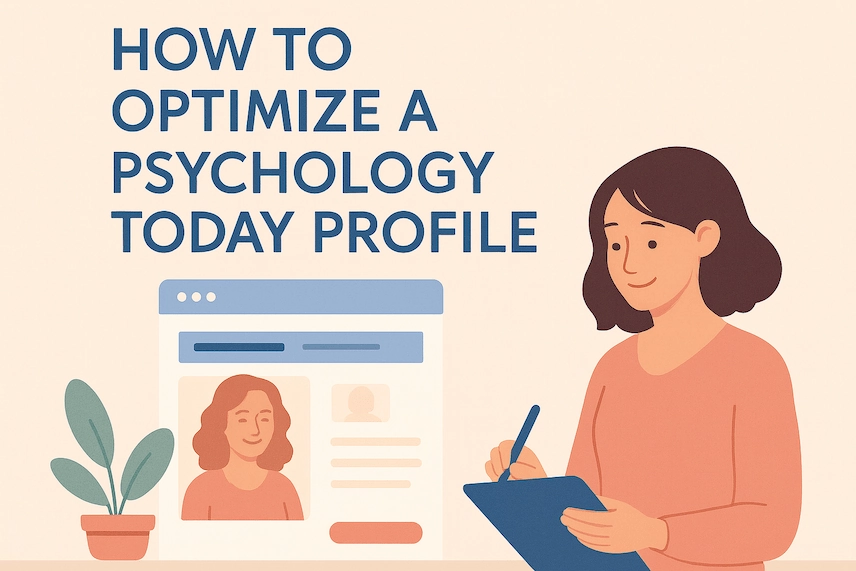
-
 By Hank Teicheira
By Hank Teicheira
Psychology Today (PT) is the largest therapy directory in the United States, with millions of visitors every month. For many therapists, it is the first place they appear online. But PT is not Google. Its editor has specific limitations, and its search algorithm does not permanently rank you at the top.
Most advice about “optimizing your PT profile” is written by people who have never been inside the PT dashboard. This guide is different. It is based on the actual editing interface therapists see when they log in, so everything here is realistic and actionable.
How the Algorithm Works
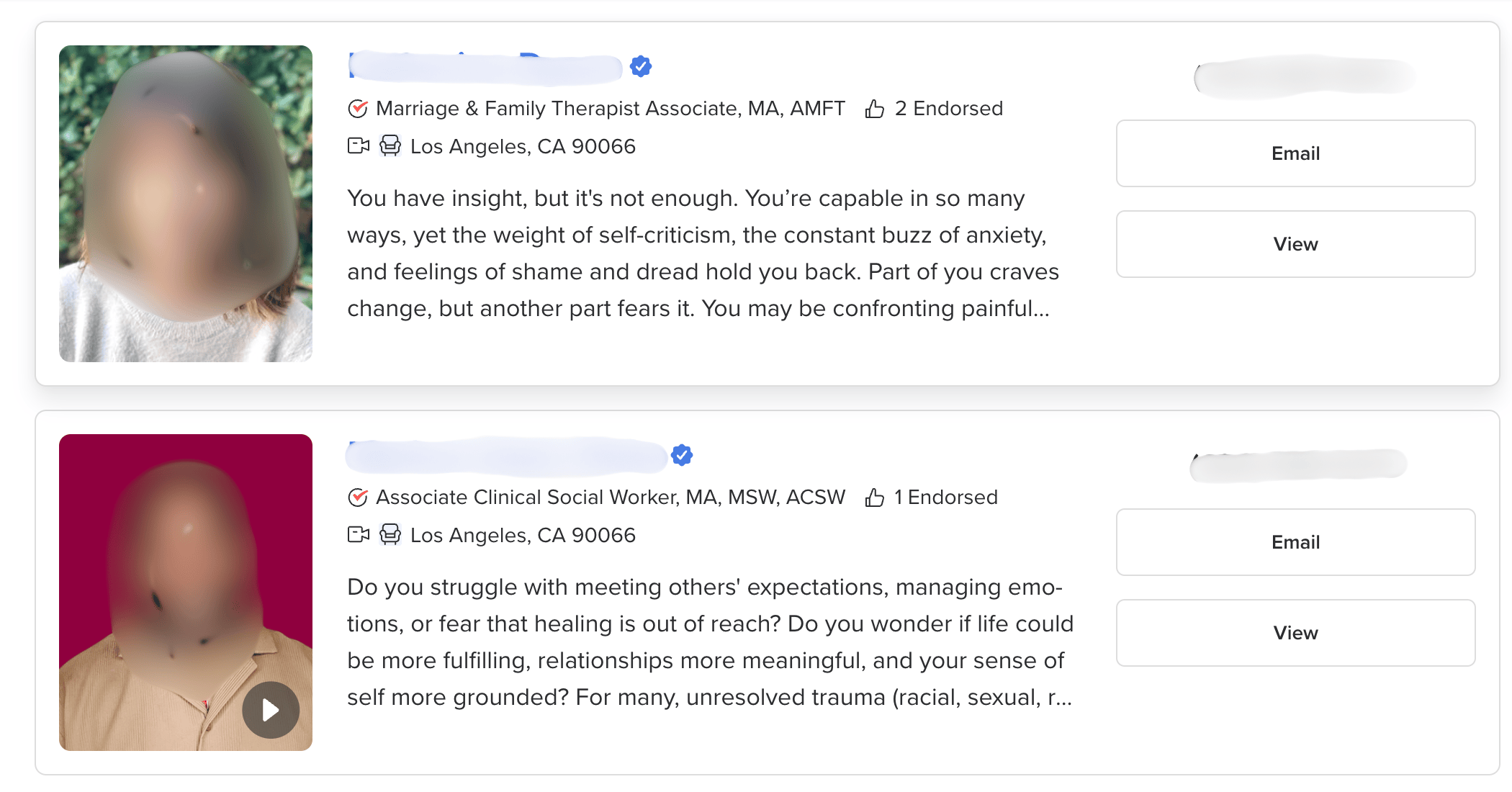
- PT uses a rotation system. Profiles rotate within a geographic area so every therapist gets exposure. You cannot buy or guarantee the top spot.
- You are automatically listed in your office’s zip code. You can add up to two additional listing areas, plus a statewide teletherapy listing if you see clients online.
- You cannot control when your profile appears, but you can make sure it converts when it is seen.
Profile Title (No True “Headline”)
PT does not provide a headline field. Your listing title is pulled from your name and credentials. Some therapists try to add “| Anxiety & Couples Counseling” to the last name field, but this is a hack, not an official feature, and it may look unprofessional.
Instead:
- Treat the first 200 characters of your bio as your headline. These appear in the search preview snippet.
- Use client-centered keywords here such as anxiety, trauma, depression, or couples therapy.
- Make sure those words align with your starred specialties for consistency.
The Bio (Personal Statement)
PT structures your bio into three separate text boxes, each with a character limit:
- Imagine your ideal client (640 characters). Identify the struggles your clients face and use “you” language to connect.
- How can you help (360 characters). Name who you work with, what you specialize in, and your approach in plain English.
- Build empathy and invite them to reach out (360 characters). Describe what therapy feels like with you and close with an invitation to connect.
Example of a Strong Bio
1. Imagine your ideal client
You may be struggling with anxiety, trauma, relationship challenges, or the lasting weight of depression that leaves you feeling unseen or disconnected. At times, it might feel like you are giving so much to others while quietly carrying your own pain. Therapy can provide a supportive space to move beyond these patterns and begin building a more grounded, fulfilling life.
2. How can you help?
I work with teens, adults, and couples, helping them navigate anxiety, depression, trauma, and family stress. My approach is collaborative and compassionate, integrating psychodynamic, relational, and family systems therapy to uncover root patterns and strengthen resilience, clarity, and connection.
3. Build empathy and invite them to reach out
My goal is to create a safe and supportive space where you feel understood and empowered. Together, we will explore what has been holding you back and build tools for a stronger, more authentic life. If you are ready to take the first step toward change, I would be honored to support you on your journey.
Specialties
PT allows you to check multiple specialties but requires you to star exactly three Top Specialties. These are displayed prominently and act as your niche signal.
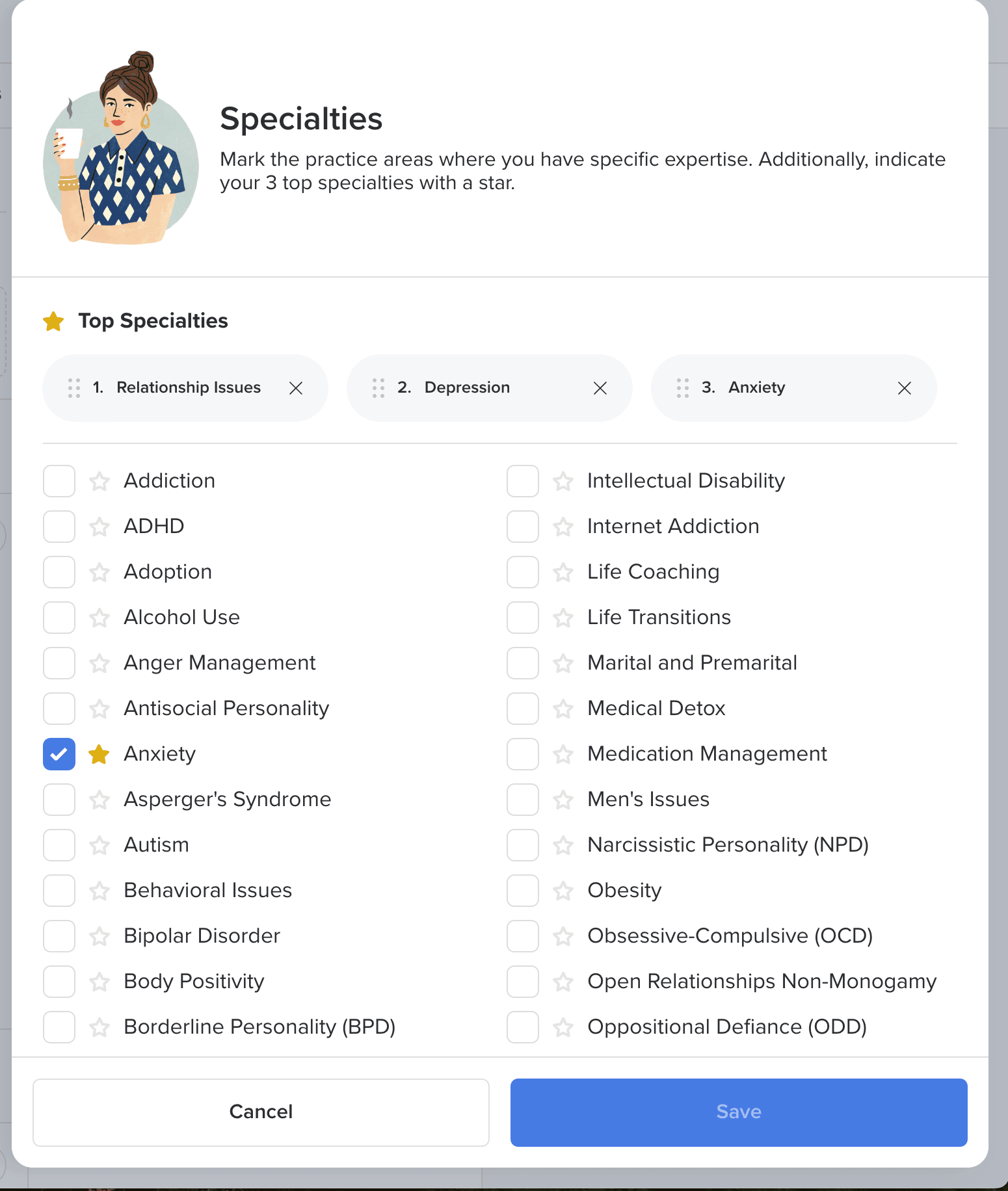
Best practices:
- Pick three and commit to them. These are the issues you want the most inquiries for.
- Order matters. Your first starred specialty is weighted most heavily.
- Make sure your bio opening reflects the same issues you star.
- Do not check everything. Limit yourself to 6–10 total to avoid diluting your focus.
Examples:
- Adults: Anxiety, Depression, Relationship Issues
- Couples: Relationship Issues, Infidelity, Communication Problems
- Trauma: Trauma/PTSD, Anxiety, Grief
- Perinatal: Pregnancy/Postpartum, Anxiety, Depression
Sidebar Short-Answer Sections
These short fields appear in the sidebar and often get read before the full bio. Each has a strict character limit:
- What types of therapy do you use (400 chars). Write in plain English.
- What issues do you treat (400 chars). Expand on your specialties.
- How do you handle billing (300 chars). Be simple and transparent.
- How do you see clients (140 chars). State format and availability clearly.
Because these are scannable, they are critical for both clarity and conversion.
Photos and Video
- Photo: Use a clear, professional headshot that conveys warmth.
- Office photo: Optional, but helps clients picture your space.
- Video (~15 seconds): This is one of the best differentiators. PT highlights profiles with video in the search listings by adding a play icon on your photo. That small icon draws the eye and makes your profile stand out in crowded search results.
A simple script works best: “Hi, I am [Name]. I help [clients] with [issues]. I would love to connect with you.”
Endorsements and Groups
-
Endorsements: Ask colleagues for specific and genuine statements. Remove generic or empty ones.
-
Groups: On PT, “Groups” refers to therapy or support groups you run, not a group practice with multiple clinicians. PT has a separate directory dedicated to groups. (PT Groups Directory)
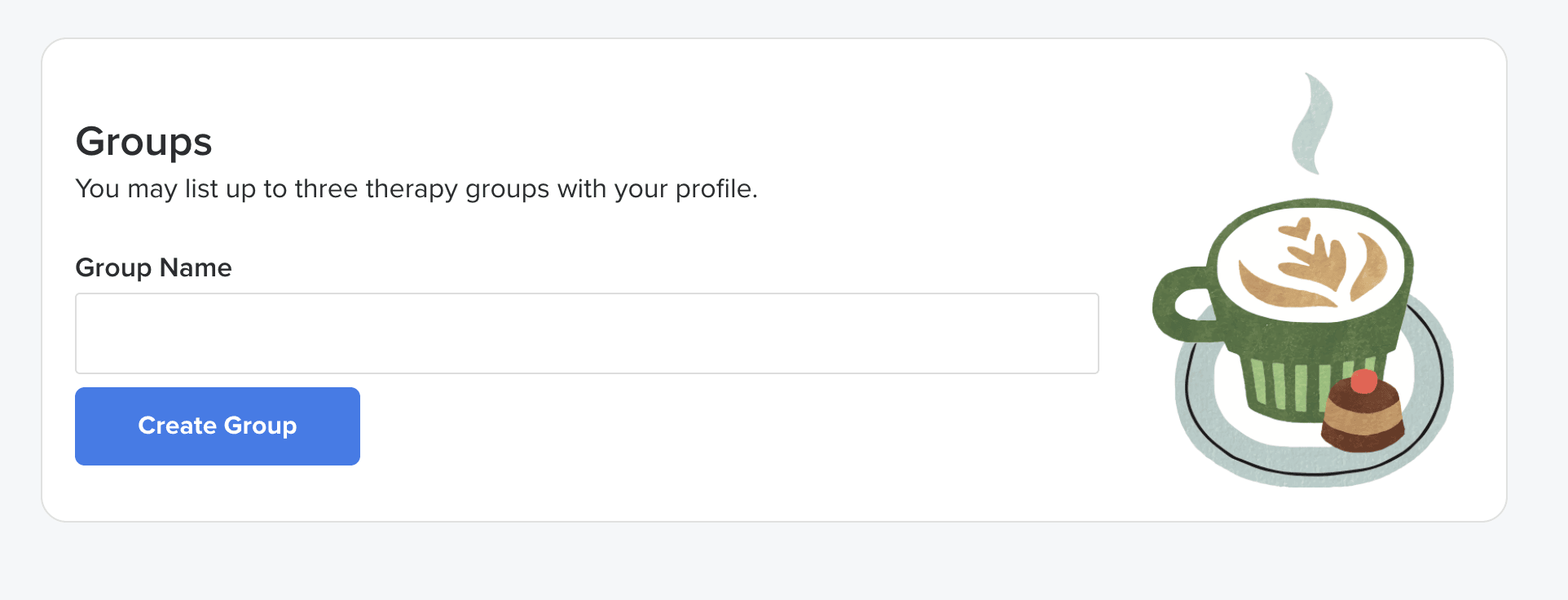
Why listing groups matters:
- Extra visibility. Groups are listed in a separate section of PT, which effectively gives you an additional profile and more ways for clients to find you.
- Niche authority. Running a group positions you as a specialist. For example, being “the therapist who runs a DBT skills group” makes you a go-to referral for that niche.
- Referrals from colleagues. Therapists who do not run groups themselves often refer clients to group therapy for supplemental work such as grief processing or skills training.
- Community connection. Clients looking for shared support sometimes prefer a group format to reduce isolation and build connections with peers.
Contact Information
- PT provides a protected phone number that forwards to your real number.
- You can add your mobile number to receive text notifications when clients reach out.
- Respond quickly. Many clients contact multiple therapists at once and the first to reply often gets the client.
Tracking and Iteration
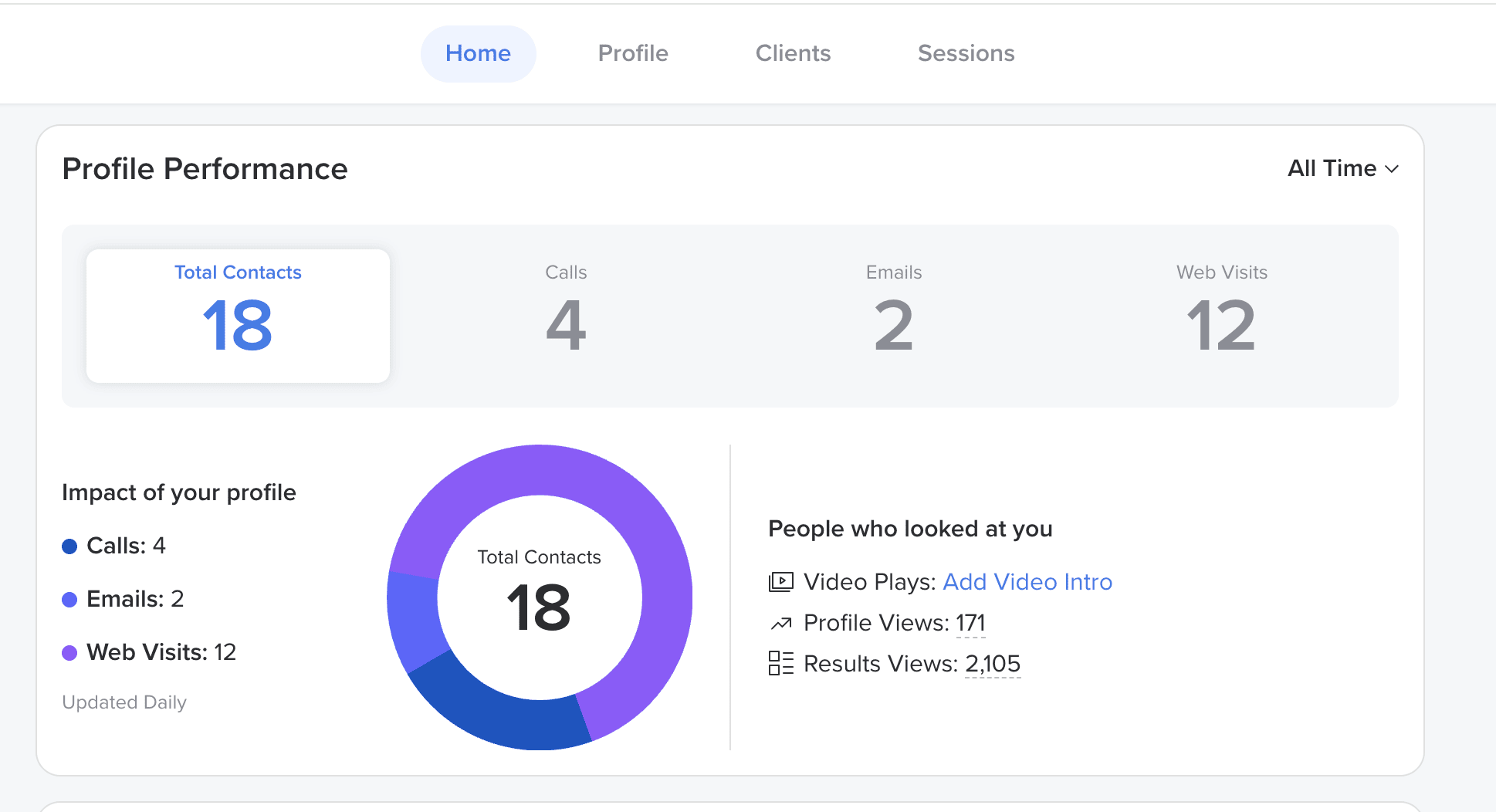
The PT dashboard (under the Home tab) shows:
- Results Views: How many times your profile appeared in search results.
- Profile Views: How many times people clicked your profile.
- Contacts: How many people reached out (calls, emails, or web visits).
You can track effectiveness by calculating:
- Click-through rate (CTR): Profile Views ÷ Results Views. This shows how compelling your preview snippet and photo are.
- Conversion rate: Contacts ÷ Profile Views. This shows how persuasive your profile is once people land on it.
Example:
- Results Views: 2,105
- Profile Views: 171 (CTR ~8%)
- Contacts: 18 (Conversion ~10.5%)
If CTR is low, improve your headshot, bio opening, or add a video. If conversion is low, refine your CTA and sidebar answers.
Conclusion
You cannot force PT’s algorithm to keep you on page one, but you can control how well your profile performs when it is seen.
That means:
- Use your bio opening as your de facto headline.
- Follow PT’s three-box bio format and stay within the character limits.
- Select and star your specialties with intention.
- Fill out sidebar sections carefully since they are highly visible.
- Upload a professional photo and a short video. The video will add a play icon in search results, which draws more attention.
- List therapy groups if you run them since they create an additional entry point for visibility and referrals.
- Monitor Results Views, Profile Views, and Contacts to track effectiveness.
Done well, your PT profile becomes more than a static directory entry. It becomes a reliable referral engine that connects you with the clients you most want to serve.
Spend More Time with Clients and Less Time on Finding Them
Let's transform your online presence
Book Free Consultation